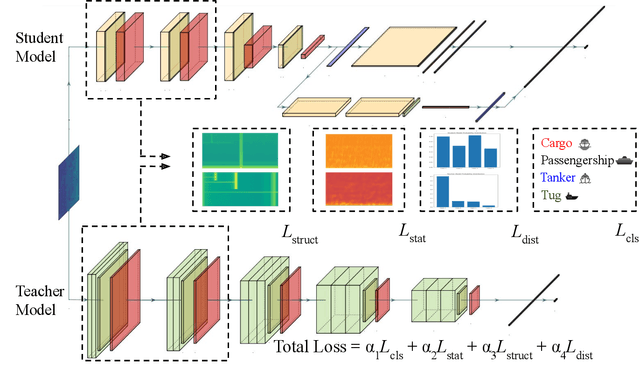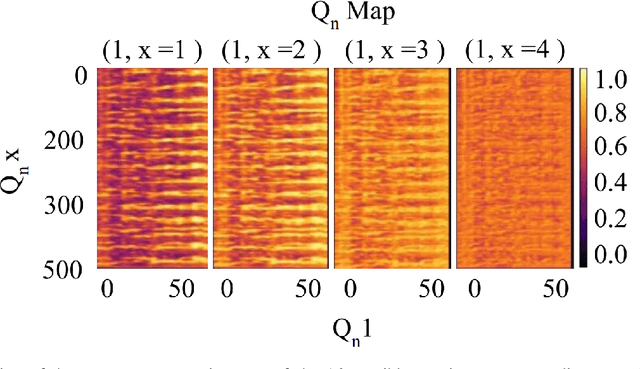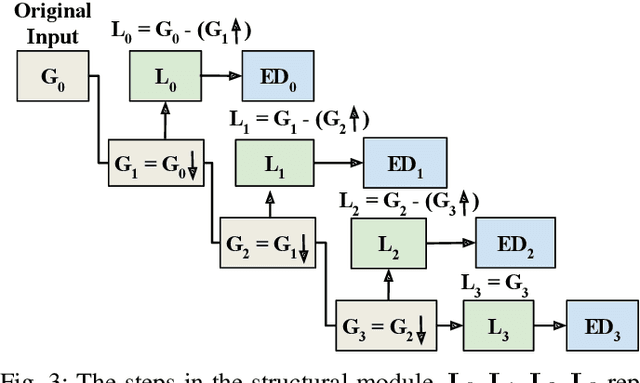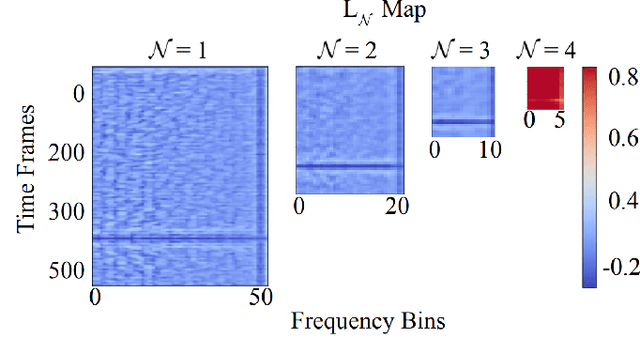Jarin Ritu
Quantitative Measures for Passive Sonar Texture Analysis
Apr 21, 2025Abstract:Passive sonar signals contain complex characteristics often arising from environmental noise, vessel machinery, and propagation effects. While convolutional neural networks (CNNs) perform well on passive sonar classification tasks, they can struggle with statistical variations that occur in the data. To investigate this limitation, synthetic underwater acoustic datasets are generated that centered on amplitude and period variations. Two metrics are proposed to quantify and validate these characteristics in the context of statistical and structural texture for passive sonar. These measures are applied to real-world passive sonar datasets to assess texture information in the signals and correlate the performances of the models. Results show that CNNs underperform on statistically textured signals, but incorporating explicit statistical texture modeling yields consistent improvements. These findings highlight the importance of quantifying texture information for passive sonar classification.
Structural and Statistical Audio Texture Knowledge Distillation (SSATKD) for Passive Sonar Classification
Jan 03, 2025



Abstract:Knowledge distillation has been successfully applied to various audio tasks, but its potential in underwater passive sonar target classification remains relatively unexplored. Existing methods often focus on high-level contextual information while overlooking essential low-level audio texture features needed to capture local patterns in sonar data. To address this gap, the Structural and Statistical Audio Texture Knowledge Distillation (SSATKD) framework is proposed for passive sonar target classification. SSATKD combines high-level contextual information with low-level audio textures by utilizing an Edge Detection Module for structural texture extraction and a Statistical Knowledge Extractor Module to capture signal variability and distribution. Experimental results confirm that SSATKD improves classification accuracy while optimizing memory and computational resources, making it well-suited for resource-constrained environments.
Histogram Layer Time Delay Neural Networks for Passive Sonar Classification
Jul 25, 2023Abstract:Underwater acoustic target detection in remote marine sensing operations is challenging due to complex sound wave propagation. Despite the availability of reliable sonar systems, target recognition remains a difficult problem. Various methods address improved target recognition. However, most struggle to disentangle the high-dimensional, non-linear patterns in the observed target recordings. In this work, a novel method combines a time delay neural network and histogram layer to incorporate statistical contexts for improved feature learning and underwater acoustic target classification. The proposed method outperforms the baseline model, demonstrating the utility in incorporating statistical contexts for passive sonar target recognition. The code for this work is publicly available.
 Add to Chrome
Add to Chrome Add to Firefox
Add to Firefox Add to Edge
Add to Edge